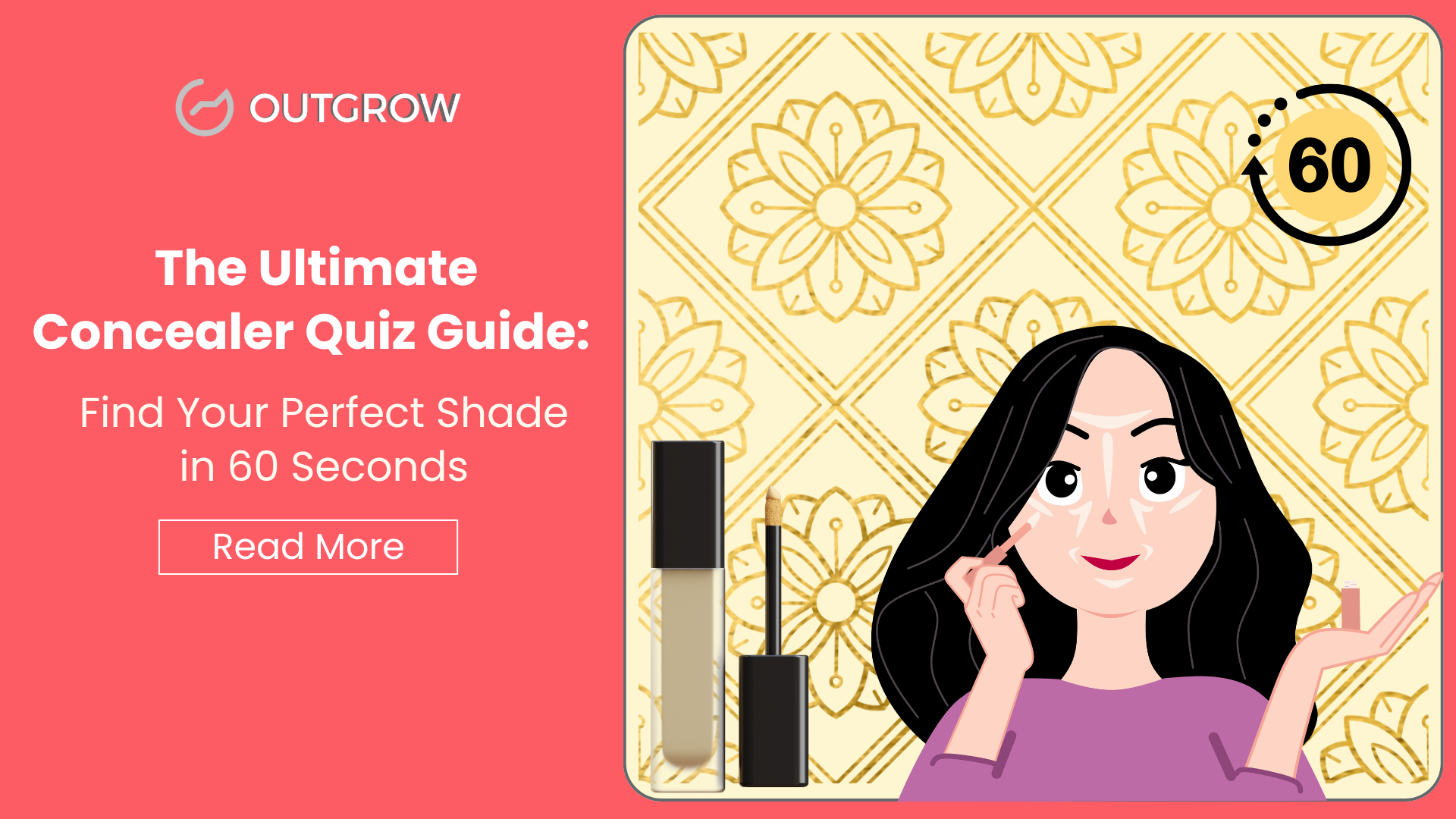The Ultimate Concealer Quiz Guide: Find Your Perfect Shade in 60 Seconds
Table of Contents
You’re standing in the makeup aisle, staring at 47 different concealer shades. Your phone’s flashlight is out, you’re comparing swatches on your wrist, and you still have no idea which one matches your skin tone.
Sound familiar?
Here’s the truth: 73% of people buy the wrong concealer shade on their first try. They end up with products that oxidize, look ashy, or sit in their drawer unused.
But there’s a better way.
What Is a Concealer Quiz and Why You Need One Right Now
A concealer quiz is an interactive tool that asks you specific questions about your skin tone, undertone, concerns, and preferences. Then it recommends the exact concealer shade and formula you need.
Think of it like having a professional makeup artist in your pocket, except it’s free and takes less time than brewing your morning coffee.
The best part? You skip the guesswork, the returns, and the drawer full of wrong shades.
How a Concealer Match Quiz Actually Works
Most people think matching concealer is about finding something close to their skin color. Wrong.
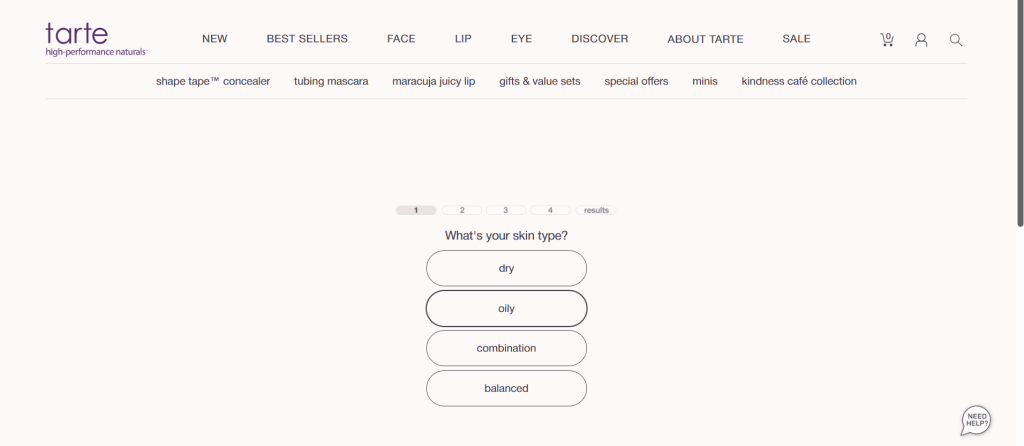
2. Choose Your Coverage
Light, medium, or full, pick the coverage that makes you feel confident and comfortable.
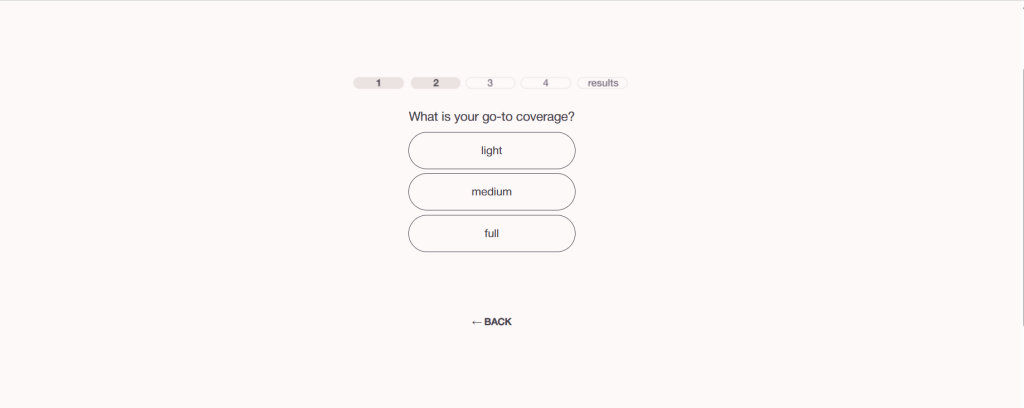
3. Pick Your Perfect Finish
Matte, natural, or radiant, select the finish that complements your style and skin.
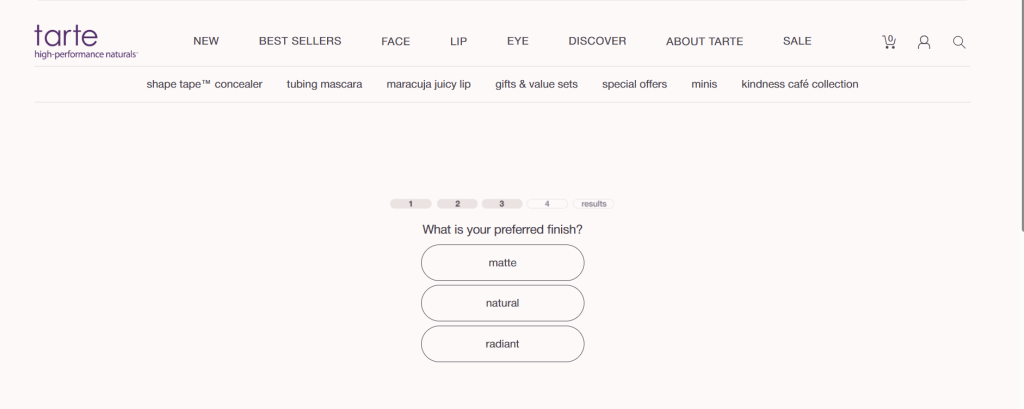
- How your skin reacts to sun exposure
- The veins on your wrist (blue means cool undertones; green means warm)
- What jewelry looks best on you (silver or gold)
- Your specific skin concerns
- Your preferred finish (matte, dewy, natural)
The algorithm processes your answers and matches you with shades from various brands. No more guessing if “Light Beige” is lighter than “Fair Neutral.”
Why Traditional Shade Matching Fails (And How Quizzes Fix It)
Walk into any beauty store and you’ll see the same problem: overhead fluorescent lighting that makes every shade look different than how it will in natural light.
Online shopping? Even worse. Your screen’s color calibration could be off by 20%.
Here’s what makes a concealer finder quiz different:
- It accounts for undertones, not just surface color. Two people can have the same skin tone but need completely different concealers based on their undertones.
- It considers your specific concerns. Got dark circles? You need a peach or orange color corrector underneath your concealer. Regular shade-matching tools don’t tell you that.
- It recommends formulas, not just colors. Dry skin needs hydrating concealers with hyaluronic acid. Oily skin needs oil-free, long-wearing formulas.
How to Find Your Concealer Shade: The Quiz Method
Taking a concealer routine quiz is simple. Here’s what to expect:
- Step 1: Identify Your Undertone: The quiz asks about your vein color, how you tan, and what metals look best on your skin. This determines if you need cool (pink), warm (yellow/golden), or neutral undertones in your concealer.
- Step 2: Match Your Depth: You’ll answer questions about your foundation shade or compare your skin to reference images. The quiz narrows down your depth level from very fair to very deep.
- Step 3: Specify Your Concerns: Dark circles, acne scars, redness, or just general brightening? Your answer changes what concealer color match you need. Dark circles often require going one shade lighter, while blemishes need an exact match.
- Step 4: Choose Your Finish: Matte concealer for oily skin. Radiant for dry skin. Natural for combination skin. The quiz factors this in.
- Step 5: Get Personalized Recommendations: The quiz spits out specific product recommendations with shade names, where to buy them, and how to apply them.
Can You Use Concealer as a Foundation? (And When You Should)
Short answer: Yes, but strategically.
Using concealer as a foundation works when:
- You have relatively clear skin and only need spot coverage
- You want a natural, skin-like finish
- You’re doing a minimal makeup look
- You’re traveling and want to pack light
Here’s the trick: dot concealer only where you need it (under eyes, around nose, on blemishes), then blend outward. Use a damp beauty sponge to blend it out for a sheer finish.
When this doesn’t work:
- You need full face coverage
- Your skin tone is uneven across your face
- You have large areas of redness or hyperpigmentation
The formula matters too. How to use concealer as a foundation depends on getting a hydrating, blendable formula. Skip the ultra-matte, full-coverage concealers for this technique.
The Foundation Finder vs. Concealer Shade Finder Debate
People often confuse these two, but they’re different tools.
A foundation finder matches your overall face color and helps you find base coverage that evens out your skin tone.
A concealer shade finder goes one step further. It helps you find targeted coverage for specific areas. Most experts recommend going one shade lighter than your foundation for under-eye concealer and matching your exact skin tone for blemishes.
Here’s the strategy that works: take a foundation finder quiz first to establish your baseline. Then use a concealer match quiz to find complementary shades for highlighting and correcting.
Concealer Color Match: The Undertone Truth Nobody Tells You
Most concealer buying guides focus on depth (light to dark) and ignore undertones. That’s why your concealer looks gray or orange even when the depth seems right.
Cool undertones (pink or red) need concealers with pink or neutral bases. Look for names like “porcelain,” “cool ivory,” or “pink beige.”
Warm undertones (yellow or golden) need concealers with yellow or golden bases. Search for shades called “warm honey,” “golden beige,” or “tan.”
Neutral undertones (balanced) can wear both but usually look best in “neutral” or “natural” labeled shades.
What is my concealer shade quiz asks strategic questions to determine this. The best quizzes show you comparison images or ask about your jewelry preferences (gold vs. silver) since these correlate strongly with undertones.
How to Find the Right Concealer Shade Without Testing
Online shopping for concealer feels risky. You can’t swatch it on your hand or see it in natural light.
Here’s the workaround:
- Use a What concealer should I use quiz that lets you upload a photo or compare your skin to standardized references. Some advanced quizzes use AI color-matching technology.
- Check your current products. If you have a foundation that matches well, note the shade name and brand. Many concealer quizzes let you input this information to find corresponding concealer shades.
- Read the undertone descriptions carefully. Brands use different naming conventions, but the undertone descriptors (cool, warm, neutral) stay consistent.
- Look for brands with shade range inclusivity. More shades mean better odds of finding your exact match.
Concealer Ingredients That Matter for Your Skin Type
A concealer finder quiz worth taking asks about your skin type and concerns because ingredients make or break the formula for you.
For dry skin, look for:
- Hyaluronic acid (holds moisture)
- Glycerin (hydrates)
- Vitamin E (nourishes)
- Avoid: alcohol denat., which dries skin out
For oily skin, seek out:
- Salicylic acid (controls oil)
- Silica (absorbs shine)
- Mattifying polymers
- Avoid: heavy oils and silicones that slide off
For sensitive skin, stick with:
- Niacinamide (calms inflammation)
- Aloe vera (soothes)
- Fragrance-free formulas
- Avoid: synthetic fragrances and essential oils
For aging skin, prioritize:
- Peptides (smooth fine lines)
- Caffeine (reduces puffiness)
- Light-reflecting particles (blur wrinkles)
- Avoid: ultra-matte finishes that settle into lines
Why Professional Shade Finder Tools Beat DIY Methods
You could spend hours watching YouTube tutorials on how to find concealer shade using household items (the white paper test, the neck match method, the jaw line technique).
Or you could take a 60-second quiz.
The advantage of a concealer shade finder tool:
- It’s built on data from thousands of successful matches
- It accounts for variables you might miss
- It recommends specific products with purchase links
- It saves you from buying multiple wrong shades
- Many offer virtual try-on features
The DIY methods work okay if you already understand undertones and depth matching. For everyone else? The quiz route cuts your learning curve from months to minutes.
Building Your Complete Concealer Routine
A concealer routine quiz doesn’t just tell you what shade to buy. The good ones map out your entire routine:
Morning routine:
- Moisturizer with SPF
- Eye cream (wait 2 minutes)
- Primer (optional, on areas where makeup fades)
- Foundation or tinted moisturizer
- Color corrector if needed (peach/orange for dark circles, green for redness)
- Concealer (one shade lighter under eyes, exact match on blemishes)
- Set with powder only where needed
- Continue with the rest of the makeup
Evening routine: Skip the concealer entirely. Let your skin breathe. Use treatment products instead.
The Ultimate Concealer Quiz Guide: Find Your Perfect Shade in 60 Seconds
Concealer matching has officially gone viral in 2025, and for good reason. People want fast, flawless answers. With concealer quizzes skyrocketing in searches like “find my concealer shade quiz” and “which concealer suits my skin”, it’s clear: personalization is the new beauty essential.

In fact, these quizzes now attract 1.9 million monthly visits, proving that quick, personalized beauty tools are dominating the digital space.
No more mismatched shades or endless swatching, just instant results and perfectly matched concealer in under a minute.
How to Create an Eye Color Quiz Using Outgrow
Want to make one yourself? Outgrow makes it stupid easy. No coding required.
1. Get Started
Sign up for a free Outgrow account to explore its user-friendly, no-code quiz builder. Already a user? Just log in and get started!

2. Choose Your Interactive Content Type
From Outgrow’s dashboard, select Product Recommendations as your interactive content type. You can start from scratch or customize a ready-made beauty quiz template from Outgrow’s extensive library to match your brand’s vibe.

3. Design Your Questions
Craft questions that help identify the most suitable concealer color for each user.

4. Map Outcomes
Use Outgrow’s advanced mapping feature to assign responses efficiently. For example:
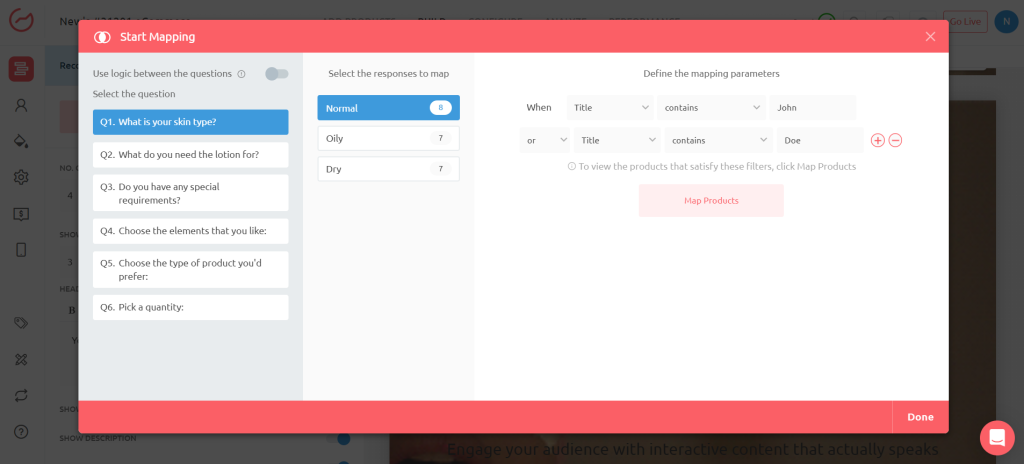
5. Embed your quiz:
Drop it on your site. Blog, landing page, wherever. Outgrow gives you embed codes, pop-ups, and chatbot flows.
Hook it up to Mailchimp, HubSpot, your CRM. Capture those leads.

6. Promote with Your Viewers
Embed the quiz on your website, blog, or landing page. Promote it through email campaigns, social media, or collaborations with coaches and personal development platforms.

7. Analyze and improve
Track engagement using Outgrow’s analytics dashboard. Determine which questions are most revealing, evaluate completion rates, and make adjustments to improve quiz accuracy and user pleasure.

Your Next Step: Take the Quiz
Stop guessing your concealer shade. Stop buying products that sit unused in your drawer.
Find a concealer quiz from a brand you trust (or better yet, an independent beauty platform that recommends across multiple brands). Set aside 60 seconds. Answer honestly.
The difference between the wrong concealer and the right one isn’t just color. It’s confidence. It’s looking in the mirror and thinking, “yes, that’s exactly right” instead of “close enough.”
Your perfect concealer shade exists. The quiz just helps you find it faster than trial and error ever could.
Ready to find your match? Look for concealer quiz tools that ask about undertones, skin concerns, and finish preferences. Skip any quiz that only asks about your skin tone depth without mentioning warm, cool, or neutral undertones.
Frequently Asked Questions About Concealer Quiz:
In-store testing happens under artificial lighting that distorts colors. A quiz uses your answers about undertones and existing products you love to make accurate recommendations you can verify in natural light at home.
Take a foundation quiz first to establish your base shade, then use a concealer quiz to find complementary shades for brightening and correcting specific areas of your face.
Quality quizzes that ask detailed questions about undertones, skin concerns, and current products achieve 85-90% accuracy. They work better than guessing but may require one shade adjustment for perfection.
The best quizzes include extensive shade ranges from very fair to very deep. Check that the quiz partners with inclusive brands that offer 30+ shades before starting.

Bhawna Singh is a Marketing Generalist at Outgrow. With a knack for building connections and a talent for crafting impactful blog content, she ensures every piece resonates with the audience. When not strategizing campaigns, Bhawna channels her artistic side by bringing melodies to life through her singing or creating vibrant masterpieces on canvas.

